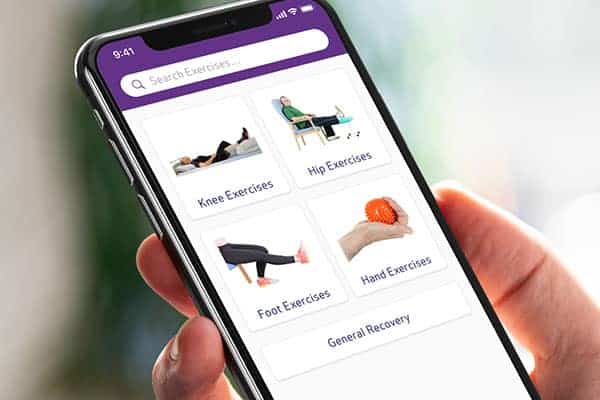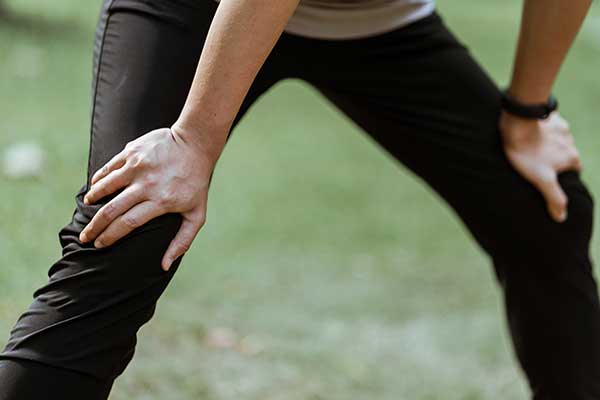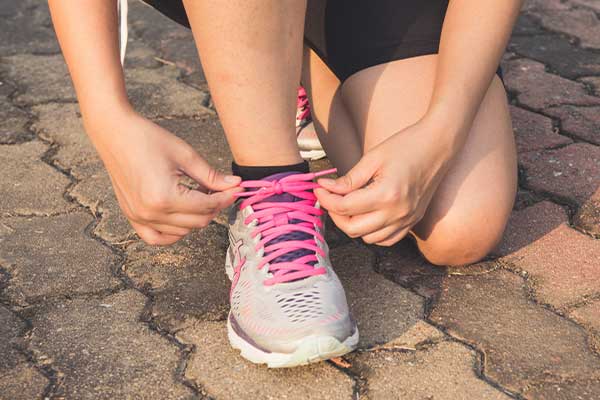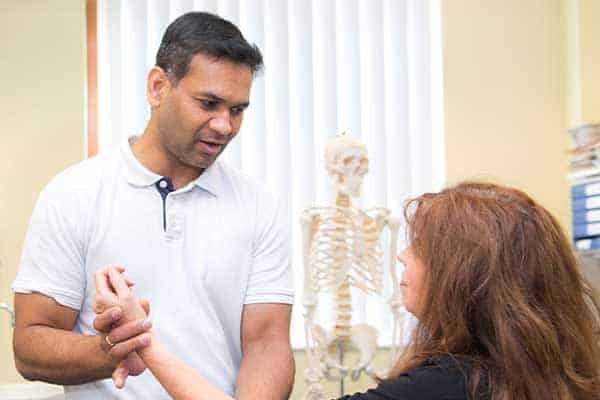Kneecap pain, also known as anterior knee pain or patellofemoral pain, is pain at the front of your knee.
What causes kneecap pain?
Although it can be caused by a trauma, such as a fall, kneecap pain usually comes on as a result of abnormal or excessive stress to the knee joint. It is very common in young people who are still growing, as well as in athletic people.
It is typically a sign that you have put a higher load through your knee than usual, but it does not necessarily mean that there is any damage to the tissues.
What are the symptoms of kneecap pain?
In most cases:
- The pain is at the front of the knee, behind and around your kneecap (patella).
- The pain seems linked to activities that place increased loads on your knee joints – for example running, squatting, jumping, climbing steps or even sitting with bent knees for long periods, which increases pressure on the kneecap.
- The pain often develops when you change the intensity of the activity you are performing, or after you have pushed yourself harder than you normally do.
How is kneecap pain diagnosed?
In general, you can identify, manage and treat kneecap pain yourself, since it rarely indicates actual damage. It is safe to keep on using your knee to support your weight.
However, you should seek a medical opinion if it does not ease after following the advice below.
What are the treatment options for kneecap pain?
There are two basic ways to treat kneecap pain.
The first is to change the type or amount of activity you perform. If the pain is severe, perhaps switch to low impact exercise such as swimming, cycling or walking while your knee recovers. Think about what caused the problem and consider reducing the volume of your exercise routine, or incorporating more recovery time between workouts.
The second thing you can do is to add in some exercises that are specifically designed to strengthen the muscles in your thigh and hip. By doing so, you can prevent the knee from taking too much of the load on its own.
In addition to altering your exercise routine and increasing recovery times, you may wish to manage the pain itself.
You could apply an ice pack for 10-15 minutes, before letting your skin heat up to its normal temperature again. You can do this as much as you like. (Do not put ice directly next to skin as it may cause ice burn. Wrap it in a damp tea towel.)
You could try anti-inflammatory painkillers such as Ibuprofen. Some anti-inflammatory painkillers also come as creams or gels, which you can rub over your knee. These tend to produce fewer side-effects than those taken by mouth. If you cannot take anti-inflammatory painkillers, other painkillers such as paracetamol, with or without codeine added, may be helpful. Ask your doctor or pharmacist for advice.
What is the prognosis (outlook) for kneecap pain?
Kneecap pain should ease by itself if you follow our advice on changing the type and amount of activity you perform.
If symptoms persist, you are advised to visit your GP.
How can I prevent recurrence of kneecap pain?
There are many things you can do to reduce the chances of kneecap pain returning.
In addition to the strengthening exercises mentioned above, you might consider losing weight, which reduces the load on your knees.
It is also important to warm up with stretching exercises before physical activity, and to wear shoes that are appropriate to the activity.

Pocket Physio | Download now
Search for ‘Pocket Physio’ on the Apple App Store for iOS and the Google Play Store for Android to download for free.




